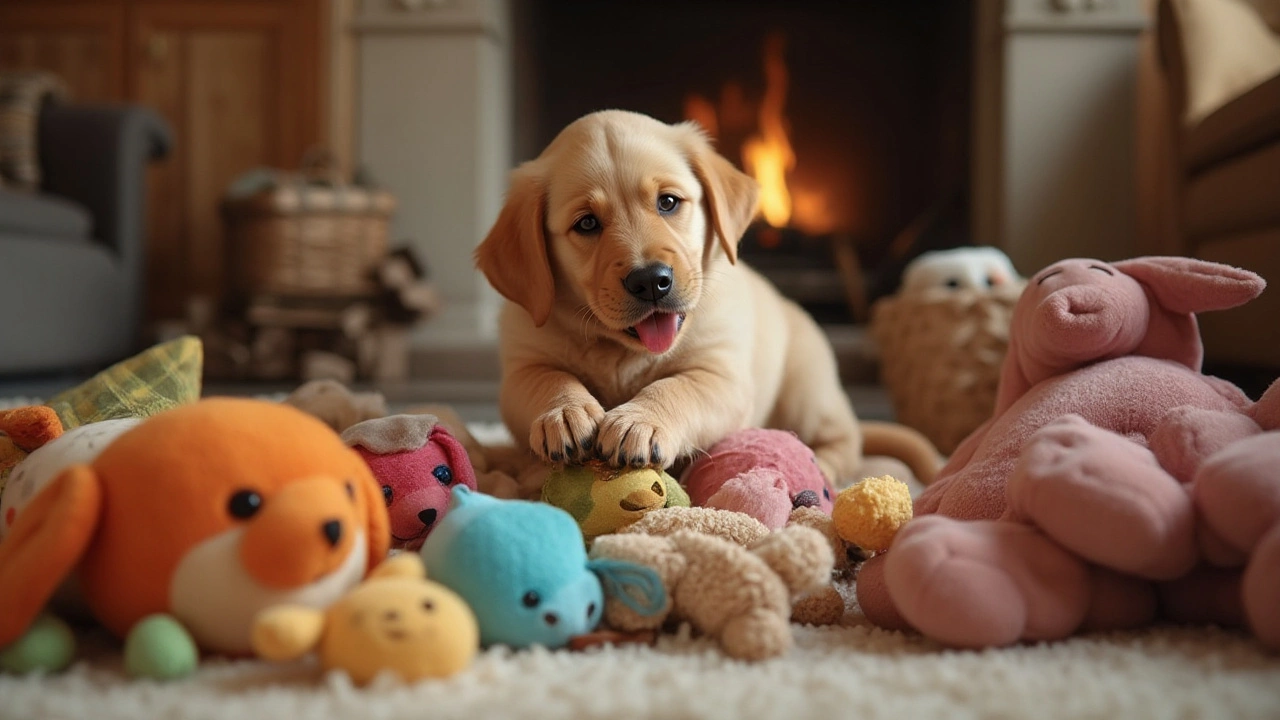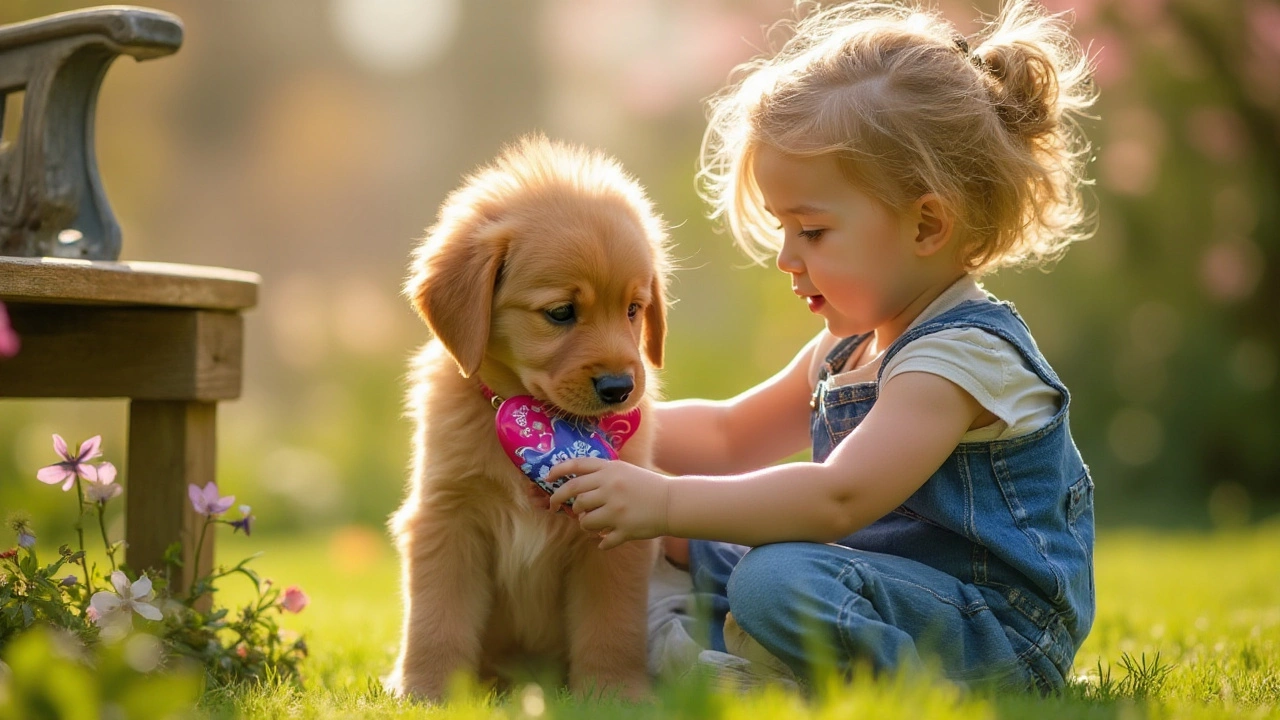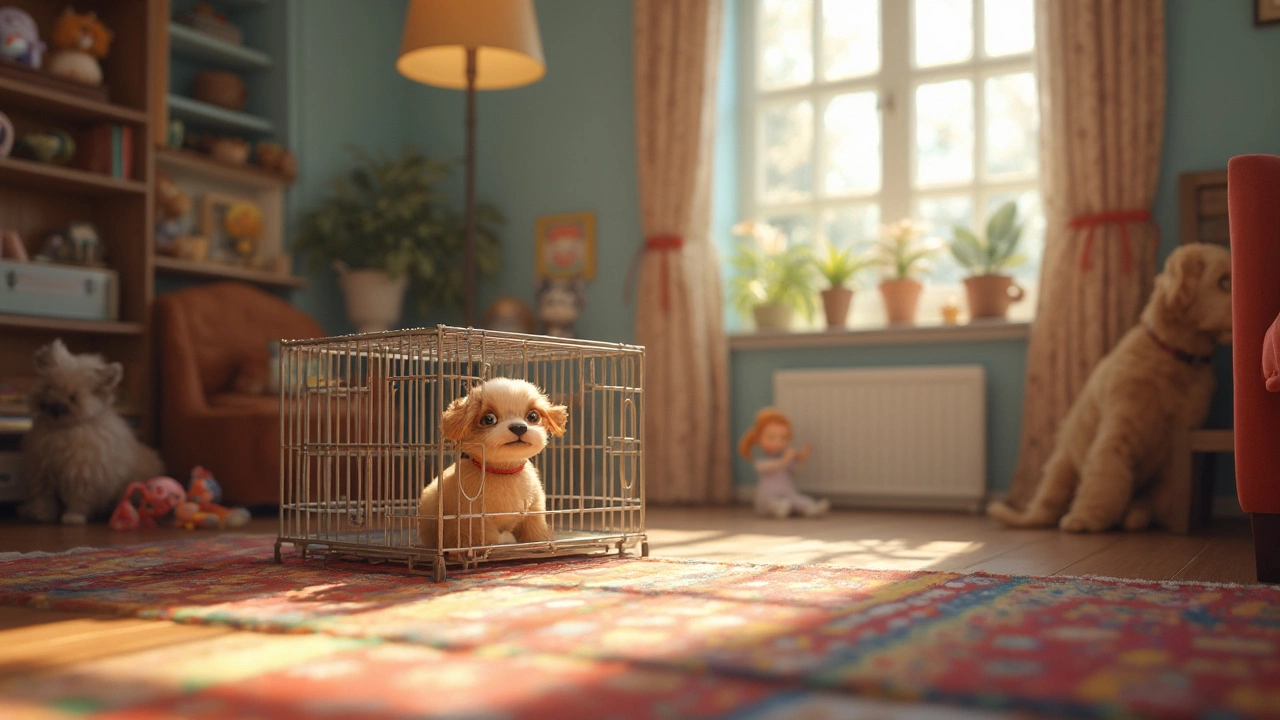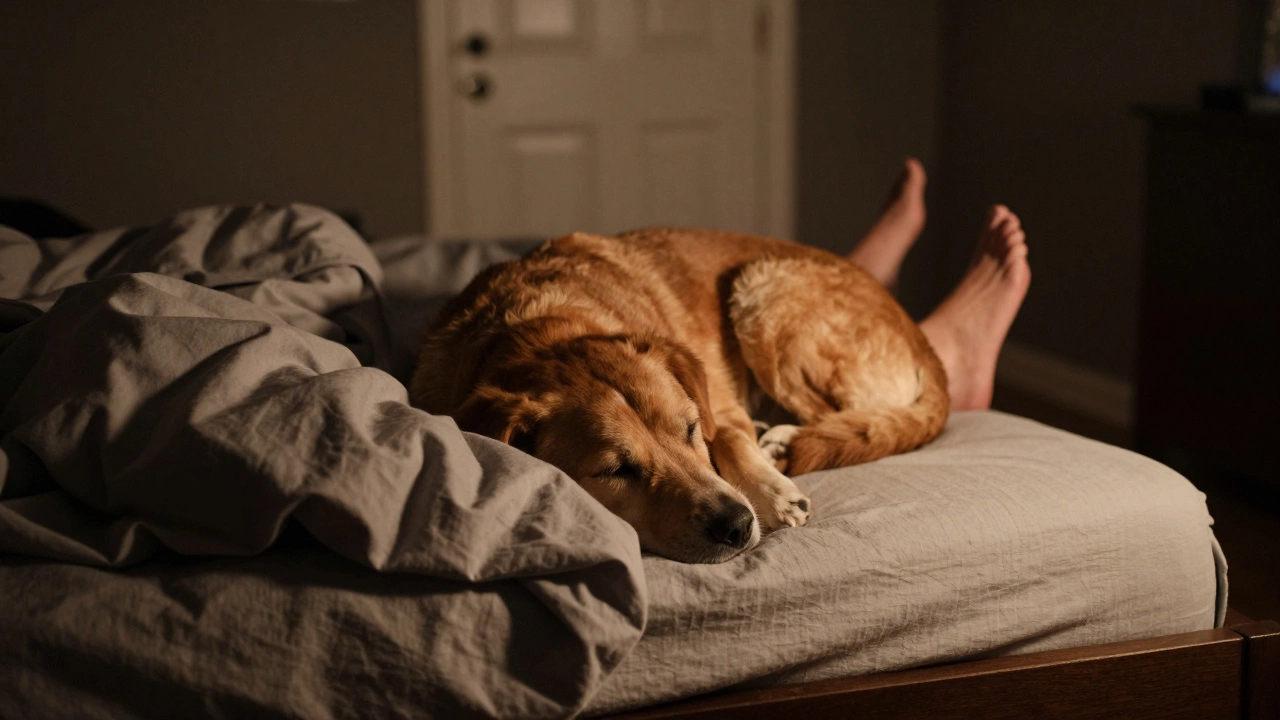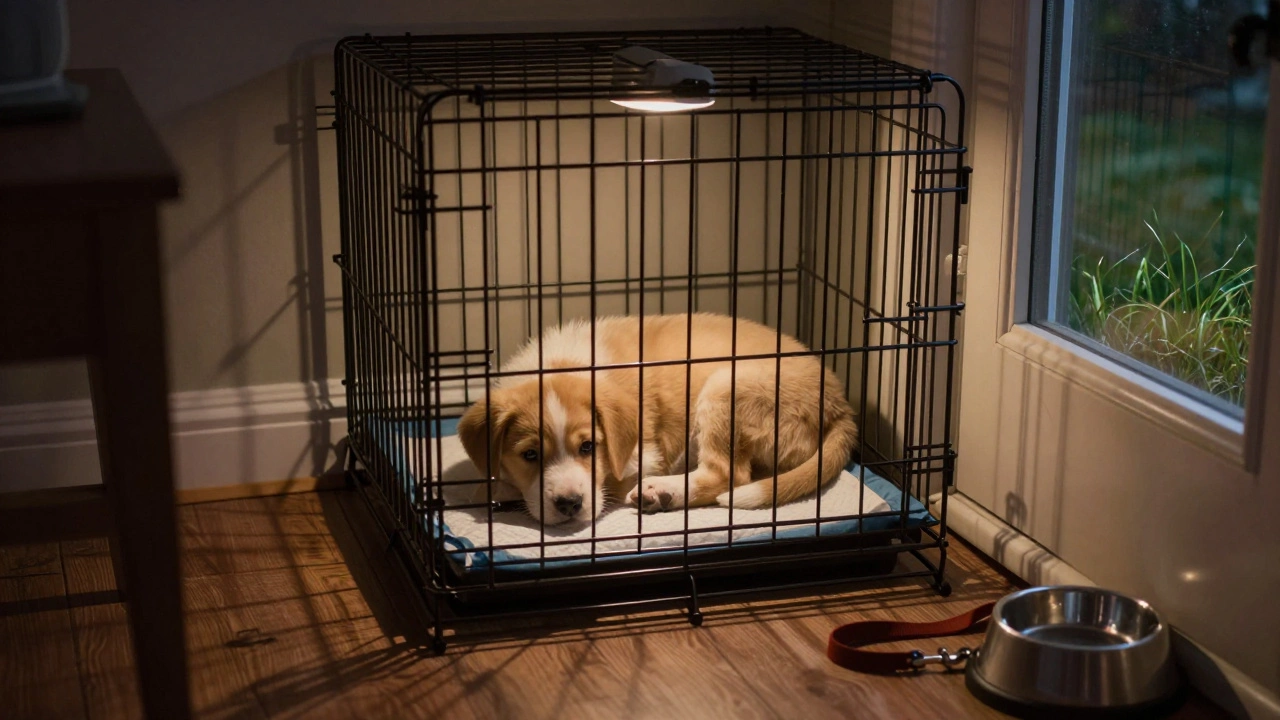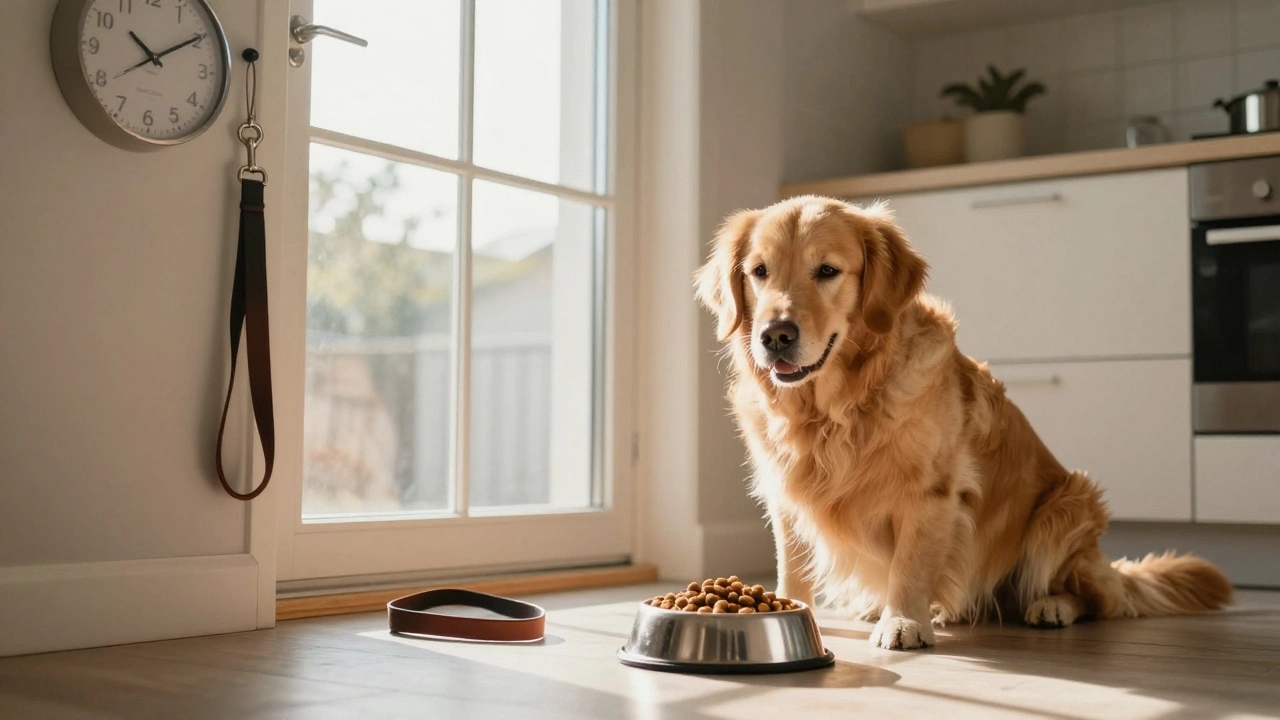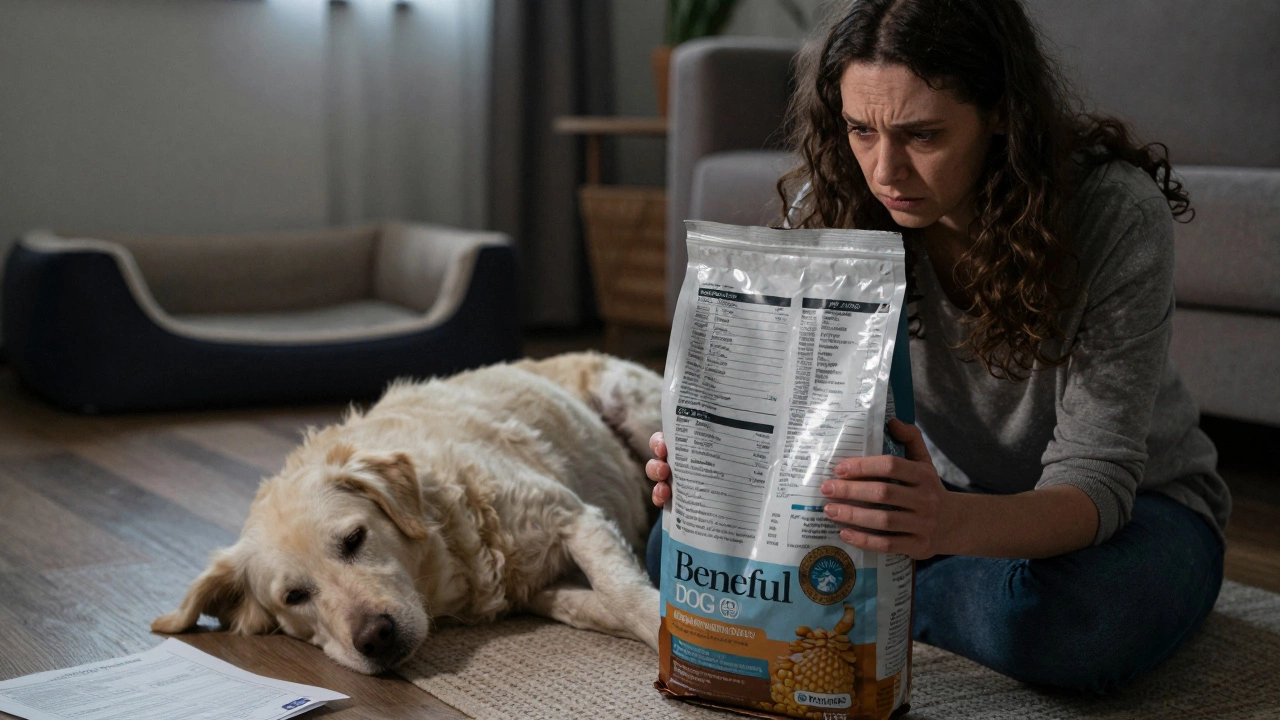Bringing home a new puppy is a joyful occasion, but it also comes with its fair share of challenges. One such challenge is dealing with the heart-wrenching sounds of your puppy's cries at night or when left alone. As you navigate this new experience, it's important to understand why your furry friend might be crying and the pros and cons of letting them cry it out.
In this article, we'll help you navigate this puppyhood phase by discussing the possible reasons for their cries and assessing whether ignoring them is indeed a good strategy. With practical tips and insights, you'll be better prepared to soothe your puppy and support their adjustment to their new home, ensuring peaceful nights for both of you. Let's explore how you can create a more comfortable environment for your new companion.
- Understanding Why Puppies Cry
- The Cry-It-Out Method: An Overview
- Pros of Letting Your Puppy Cry It Out
- Potential Cons and Risks
- Alternatives to Comfort Your Puppy
- Tips for Successful Puppy Training
Understanding Why Puppies Cry
When you first bring a puppy into your home, their cries can tug at your heartstrings, easily prompting concern. To bravely face these early days and nights, it's crucial to understand what's behind your puppy's vocal distress. Puppies, much like human babies, rely on crying as a primary form of communication. Initially, these cries are tied to basic needs—insecurity, loneliness, hunger, or a simple need for attention. Their tiny world has been uprooted; transitioning from a comforting litter environment to the unfamiliar territory of their new home can be quite overwhelming. The separation from their mother and siblings naturally instigates anxiety, and they reach out through cries to signal their need for comfort and security. Experts from the
The Humane Societysuggest that recognizing and understanding these initial cries is key to establishing a sense of safety and nurturing trust between the puppy and owner.
Besides the emotional and instinctive factors, physiological reasons often play a part in why puppies cry. A small bladder means nighttime potty breaks are unavoidable, which might urge a puppy to cry out for attention. Moreover, puppies are in an ongoing process of physical growth and development, meaning changes in their body sometimes manifest as discomfort or even mild pain, leading to expressive cries. As they explore their new surroundings, vivid dreams might also turn into vocal expressions due to their active REM sleep phase. Most puppies generally cry out of necessity rather than manipulation, emphasizing the need to address their concerns genuinely and sensitively. While a few nights of disrupted sleep can feel exhausting, it’s essential to be patient and consistent, ensuring each cry receives the appropriate response.
Understanding the roots of your puppt's cries involves observing patterns—taking note if it happens during mealtimes, after play sessions, or in either broad daylight or night. Veterinary experts advise that consistent cries at these times could indicate underlying issues. Persistent and excessive crying can sometimes point to health concerns, urging a brief consideration of potential medical needs. It's always wise to consult a vet if there's doubt. Experienced pet owners reinforce the importance of early interaction, gradually teaching the puppy about consistent daily routines to soothe their anxiety. Routine, familiarity, and attention to these signs can help manage your puppy’s crying phase with both compassion and insightful understanding, paving the way for a smoother transition and a mutually rewarding journey.
The Cry-It-Out Method: An Overview
The Cry-It-Out method, often deliberated within the realm of puppy care, is a controversial yet common approach embraced by many pet owners. Essentially, it involves allowing your puppy to cry without immediate intervention, with the belief that they will eventually settle down on their own. The concept stems from similar techniques applied to human infants; the intent is to teach the puppy self-soothing techniques and reduce their dependence on human intervention for every distress signal. Puppy care experts are divided on its effectiveness, leading to a rich dialogue among veterinarians, pet psychologists, and trainers.
One pivotal point in discerning the effectiveness of this method is understanding the underlying reasons why puppies cry. These cries might be signaling basic needs, such as hunger or the need for a bathroom break, or they could originate from a place of anxiety or discomfort in an unfamiliar setting. Therefore, knowing your puppy’s cry can help determine whether the Cry-It-Out approach is suitable. Many experts suggest that understanding these aspects is crucial before deciding to implement this method.
“The Cry-It-Out method is not a one-size-fits-all solution,” says Julie Love, a renowned animal behaviorist. “It requires a keen understanding of your pet’s emotional and physical needs.”While the method may suit some puppies who quickly adjust to their new homes, for others it may induce heightened anxiety if they feel consistently ignored and misunderstood. Herein lies the challenge – gauging when it's a genuine call for help versus a habitual cry for attention.
When considering this method, it's essential to be mindful of the puppy’s age and temperament. Young puppies generally need more frequent care and comfort, especially during their initial weeks in a new environment. Their training should always be balanced with ample attention and affection to foster trust and a lasting bond. In contrast, for slightly older puppies with a grasp of basic comfort practices, the method might help in establishing a more independent demeanor. Nonetheless, owners are encouraged to regularly assess their puppy's response to ensure the method is not inadvertently causing stress.
Additionally, it's worth noting that other strategies might complement or replace the Cry-It-Out method, such as gradually extending periods of being alone or using reassurance methods. Some owners find success by integrating crate training, which provides a safe and secure space for the puppy to retreat to when they're alone. By combining these methods, you may better meet the specific needs of your puppy while still gently encouraging self-soothing behaviors.
In today's pet care landscape, where information is abundant and occasionally contradictory, understanding where the Cry-It-Out method fits into your puppy care routine is paramount. Engage with resources from respected trainers, unite your knowledge with a deep understanding of your pet’s personal behavior, and perhaps most importantly, stay adaptive. Every puppy is unique, and what calms one might not work for another.
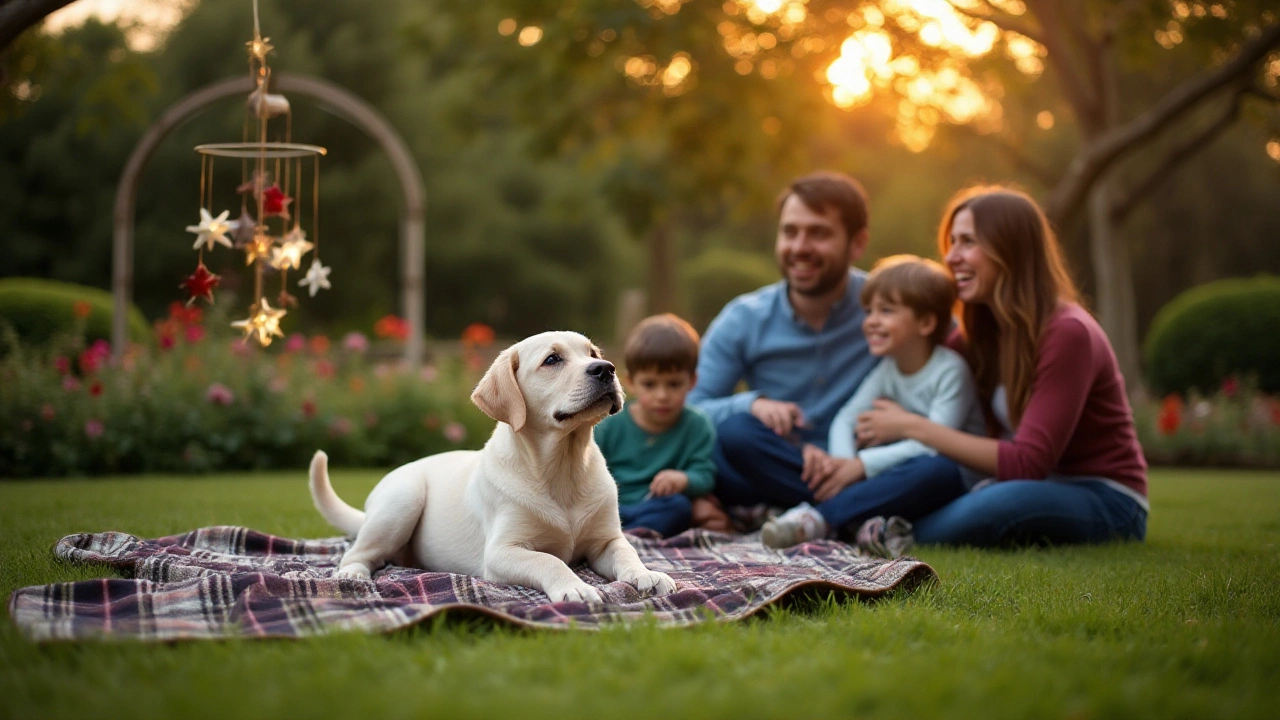
Pros of Letting Your Puppy Cry It Out
Dealing with a crying puppy can tug at your heartstrings, but there are certain benefits to giving them the space to work through their anxieties. The cry-it-out method has its advocates due to several compelling reasons that some puppy parents find effective. Firstly, allowing your puppy to cry it out can help foster a sense of independence. Puppies are naturally social creatures, and their cries often signal a need for attention or comfort. By not immediately responding every time, you're helping your puppy learn that it is okay to be alone, laying the foundation for self-soothing behavior. This can be particularly valuable for later situations such as when you need to leave them alone at home.
Another benefit is establishing a consistent routine, which is crucial in puppy care. Routines help puppies feel secure and understand what is expected of them. By letting them cry it out at nighttime, they learn that it's time to sleep and that cries will not summon immediate results, reinforcing the daily schedule you're striving to maintain. This approach can be particularly useful if you're crate training, a practice that helps with both housebreaking and providing a safe space for your pet. For instance, a study from Colorado State University noted that many puppies eventually adjust to crate training with reduced anxiety over time, showing fewer signs of stress once they understand the routine and their cries aren’t always met with immediate attention.
Letting your puppy cry it out can also prevent reinforcement of negative behaviors. If every whimper is met with comfort or treats, puppies quickly learn that crying is a way to get what they want. This can lead to longer-term behavioral issues where a puppy uses whining as a strategy to manipulate their environment or get their desires met. By balancing when to comfort and when to allow them to cry it out, you’re teaching them desirable behavior patterns, making your training efforts more effective over time.
According to renowned animal behaviorist, Dr. Sophia Yin, "Timing your response correctly to a puppy's cries helps them learn which behaviors are acceptable, leading to a balanced and well-behaved pet."Giving your puppy the chance to self-settle imbues them with resilience, helping them to develop coping mechanisms that reduce their dependence on human intervention for every minor discomfort. This self-reliance not only helps in creating a balanced emotional state for your puppy but also ensures you have more flexibility in your daily routine, knowing your pet can handle brief periods of isolation without distress.
Puppy crying can be mitigated by understanding their basic needs through this method. While initially challenging, the long-term advantages include a more adaptable and less anxious dog. The positive aspects of allowing a puppy to work through its cries are grounded in a mix of behavior reinforcement, self-soothing, and independence skills that are invaluable as they grow. For those considering this option, remaining consistent is key—without consistency, the potential for confusion and increased anxiety in your puppy increases, which is counterproductive.
Potential Cons and Risks
Letting your puppy cry it out may seem like a practical approach, but it's crucial to be aware of the potential downsides and risks associated with this method. Puppies, being social creatures, often cry to communicate their needs, discomfort, or loneliness. Ignoring these cries consistently might inadvertently lead to an increased sense of insecurity within your pet. This sense of abandonment can affect their trust in you, potentially straining your budding relationship. Puppies potentially learn that their basic needs won't be met, leading to anxiety issues that may last into adulthood.
Moreover, consistent crying that goes unattended might lead to physical stress for your puppy. Stress can weaken their immune system, making them more susceptible to illness. In some cases, stressed puppies might develop behaviors such as excessive chewing or even biting, which can be dangerous for both the puppy and those around them. Another concern is the possibility of reinforcing negative behavior. Puppies might learn that intense or prolonged crying is the only way to gain attention, inadvertently framing crying as a coping mechanism for other situations.
In many cases, giving attention to a crying puppy—even if it's just to scold or calm them—can inadvertently reward the behavior. According to veterinary specialist Dr. Susan Whitmore, "Addressing the root cause of the crying is more effective than simply waiting for it to stop. Puppies are intelligent and adapt to behavioral cues from us." This quote highlights the importance of understanding the underlying issue rather than using a blanket solution like crying it out. Dealing with the root cause helps to promote healthier communication and trust.
Finally, it’s important to consider the impact on your household. Continuous crying can be stressful for everyone involved, disrupting sleep and raising tension levels. Long-term noise disturbance might even affect neighbors, especially for those in close living quarters. Consulting with a professional trainer or veterinarian can help identify more balanced solutions tailored to your pet’s needs, ensuring that the method you choose is safe and supportive for both puppy and family.
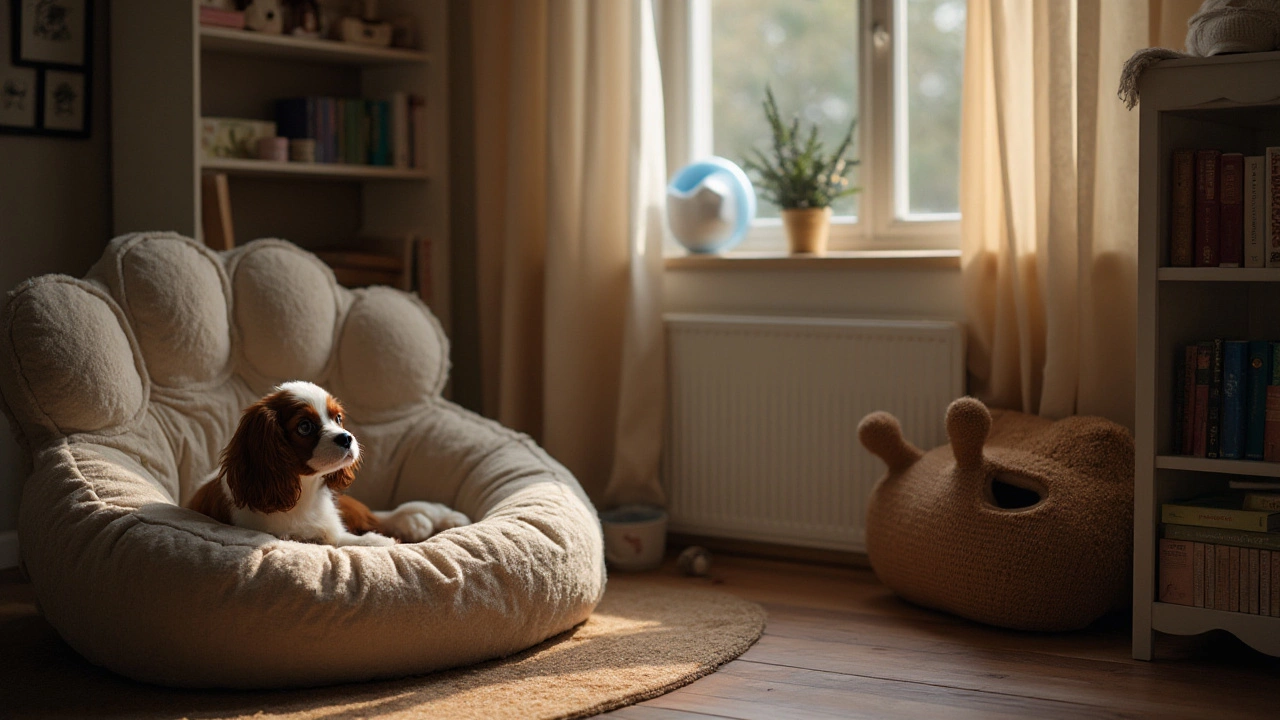
Alternatives to Comfort Your Puppy
When your puppy is crying, it's crucial to understand they might simply be expressing their need for attention, comfort, or reassurance. While it may seem exhausting, providing support without encouraging this behavior will require a delicate balance. Start by creating a cozy sleep environment that mirrors their natural preferences. Use a soft, padded bed placed in a quiet corner, away from the hustle and bustle of the household. This safe haven helps the puppy feel secure and is essential in reducing nighttime restlessness. Additionally, consider placing a ticking clock or a warm water bottle wrapped in a towel inside their bed. These items can mimic the warmth and sound of a littermate's heartbeat, offering soothing comfort to your anxious pup.
Another effective strategy is ensuring that your puppy has had enough exercise and mental stimulation during the day. A properly tired puppy is more likely to sleep soundly, rather than fussing through the night. Implement a daily routine that includes adequate playtime, short training sessions, and gentle walks as your puppy's age and breed require. It is important to balance physical activity with mental enrichment activities like puzzle toys or interactive games, which can keep their mind sharp and engaged. Remember that consistency in these routines will cultivate a sense of security, as puppies are creatures of habit and thrive on predictable schedules.
“Consistency is key when training your puppy. The more routines they can rely on, the less anxious they will feel.” — Cesar Millan
A useful tip in comforting your pup is introducing a transitional object into their life. This could be a specific toy or blanket that your puppy associates with safety and your presence. When you're away, leave this item with them to help ease separation anxiety. Make sure to spend intentional time bonding with your puppy when you're together. Regularly engage in activities like grooming, light massaging, or gentle petting, which foster trust and reinforce your bond. This familiarity will gradually help your puppy grow to understand that even when you're away, you'll always return.
If your puppy continues to have difficulties, consider employing sounds or scents to offer additional reassurance. Playing soft, calming music or leaving a piece of your clothing with them can help maintain a sense of closeness. Certain essential oils, known for their calming properties, can be diffused in their sleeping area, but it's crucial to first consult with a veterinarian to ensure the chosen scents are safe for puppies. These soothing measures might take some trial and error, but the right combination can dramatically reduce nighttime crying. Remember, patience and empathy go a long way in supporting your puppy's transition to their forever home.
Puppy care is a multifaceted task, and it involves more than just responding to cries. Understanding your puppy's unique personality and needs will be at the core of comforting them effectively. Be diligent in observing their behaviors and responses to different stimuli. With time, these small yet meaningful efforts will help guide your puppy towards becoming a confident, well-adjusted member of the family. Always remember, every puppy is different, so what works for one might not work for another. Stay flexible and open to adjustments as you find what best comforts your little furry friend.
Tips for Successful Puppy Training
Training a puppy is both an adventure and a test of patience. Once you bring that fluffy bundle of joy into your life, integrating effective training is crucial to ensuring a well-behaved adult dog. Start with setting clear ground rules from day one. Puppies thrive on consistency, so it's essential to be clear about what behaviors are acceptable. If your puppy is allowed on the couch one day but scolded the next, it sends mixed signals. Consistency in rules and their enforcement helps puppies learn more effectively and fosters a sense of security, which is vital as they often cry from anxiety and uncertainty.
Training isn’t just about obedience; it’s about strengthening the bond between you and your puppy. Positive reinforcement is a powerful tool in this journey. Reward your puppy for good behavior with treats, praise, or playtime. This kind of training encourages them to associate positive actions with enjoyable outcomes. On the flip side, use a firm, but gentle, word like ‘no’ to correct undesirable behavior without yelling or physical punishment, which can lead to fear and increased anxiety. Jean Donaldson, a renowned dog trainer, emphasizes this by saying,
"Dogs do what works, so find ways to make doing the right thing pay off and doing the wrong thing unrewarding but non-traumatic."
Socialization is another critical component of puppy training. The world is a big, overwhelming place for a small puppy. Exposing them to different environments, people, and other animals in a controlled and positive manner can prevent fear and aggression later in life. Introduce your puppy to various sounds, smells, and experiences, ensuring these encounters are pleasant. However, ensure these interactions are safe to prevent them from becoming traumatically overwhelming. When introducing your puppy to new scenarios, remember to stay calm and reassuring to help them feel secure.
Learning basic commands such as ‘sit’, ‘stay’, and ‘come’ is essential for your puppy’s safety and becomes easier with practice and patience. Start teaching commands in a distraction-free environment and gradually introduce changes, such as moving outdoors. Consistency and repetition are key. Always celebrate small victories and don’t rush the learning process. Make training sessions short and fun; puppies have short attention spans and can become frustrated if pushed too long.
Puppy training should also incorporate a clear house-training regimen. Puppies don’t come with bathroom manners, so it’s up to you to take them outside frequently to create a pattern. Initially, this might mean taking them out every couple of hours, particularly after playtime, meals, and naps. It’s a good idea to praise them lavishly when they go in the right spot to reinforce positive behavior. Make sure not to punish accidents harshly; instead, clean up thoroughly and note these times to adjust your training schedule. Gradually, you’ll see your pup start to understand and signal when they need to go.
Finally, patience is the backbone of successful puppy training. It’s important to remember that puppies will make mistakes. Their brains are still developing, and just like small children, they learn best with patience and gentle guidance. While training your puppy, maintain your sense of humor and enjoy the sweet and silly antics that come with puppyhood. With time, patience, and love, you can guide your new pet into being a well-mannered, happy, and integrated member of your household.


